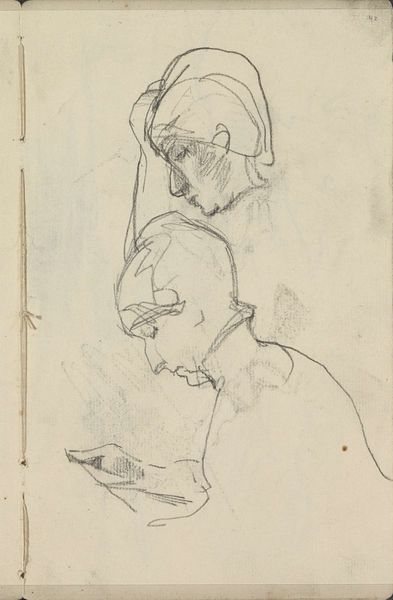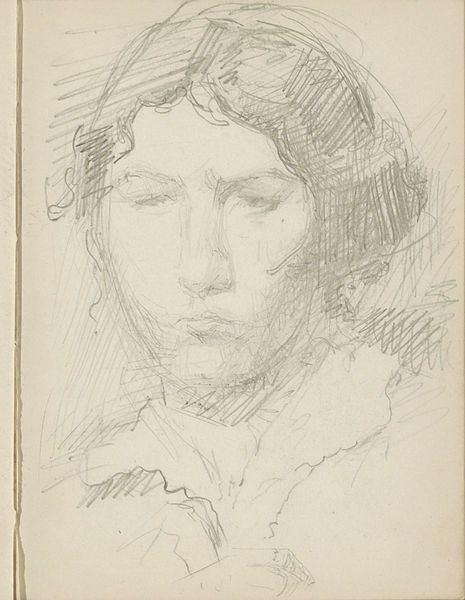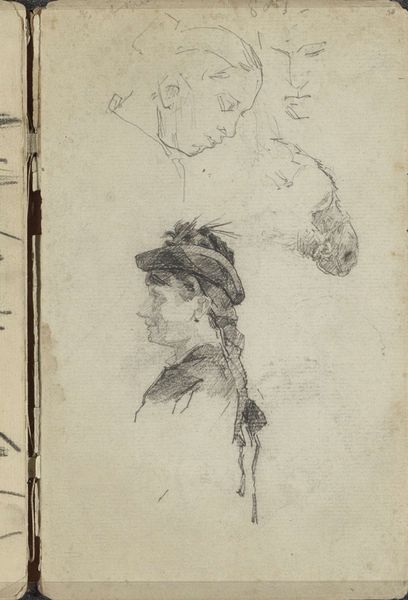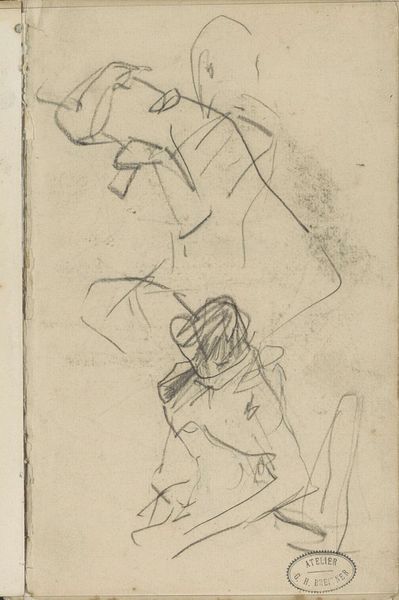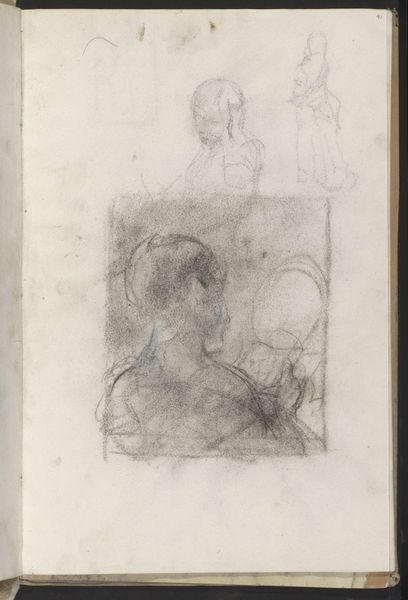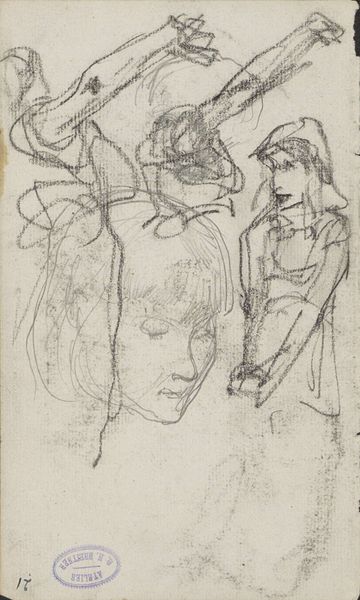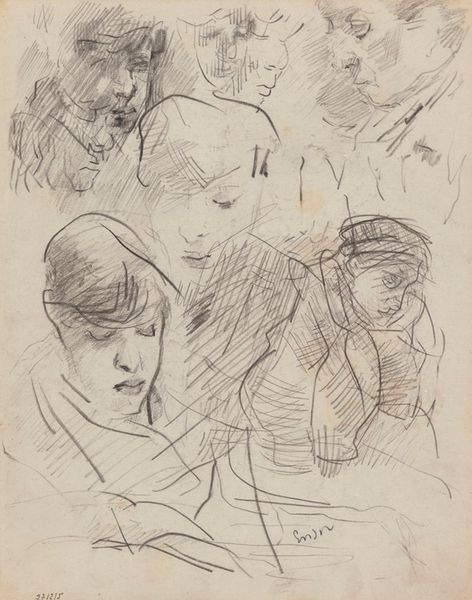
Copyright: Rijks Museum: Open Domain
Curator: What a wonderfully intimate study. Here we have Isaac Israels’ “Two Portraits of an Unknown Woman,” likely sketched between 1886 and 1934. It's a drawing rendered in pencil on paper and held in the collection of the Rijksmuseum. Editor: My first thought is the fragility of it. The pencil strokes are so light, barely there. You can almost feel the paper's texture, a real sense of immediacy. Curator: That's very true. The sketch-like quality underscores its purpose – a fleeting impression captured in a personal sketchbook, where he’s experimenting with light and shadow. There's a duality, isn’t there, the two portraits one above the other almost acting as memory upon perception? Editor: Absolutely. It speaks to process; a glimpse into Israels’ method, his exploration of form through simple, readily available materials. Was the ready availability of pencils and paper, or sketchbooks, influencing his decision to produce more work of this type at that time? I find the accessibility interesting and relevant. Curator: Precisely. It's fascinating to consider how the relative ease of sketching allowed artists to investigate different angles of their subject, to rehearse before committing to larger, more formal compositions. Look at how the top figure seems almost like a faint echo. Editor: The layering does imply repetition or multiple takes. What do you make of the woman's gaze? Is it melancholic? Curator: I think there is a pensive quality. But notice how the tilted head in both figures offers a slightly different nuance? I'm more intrigued by the unknown nature of her image, and of the two images to each other: Is it simply practice, or is there an intended psychological commentary by using this composition? Editor: And does the anonymity of the woman add to its impact? A universal representation perhaps. Curator: Indeed. The absence of a known sitter almost universalizes the theme: the fleeting nature of time, the transient quality of beauty itself. Editor: I think, reflecting, I like how immediate and unpretentious it feels, it foregrounds a practice of art making rather than the end product. Curator: For me, the layered portraits speak volumes about the way memory shapes our perception. The subtle shift of expression, as caught through fleeting lines, remains impactful.
Comments
No comments
Be the first to comment and join the conversation on the ultimate creative platform.




